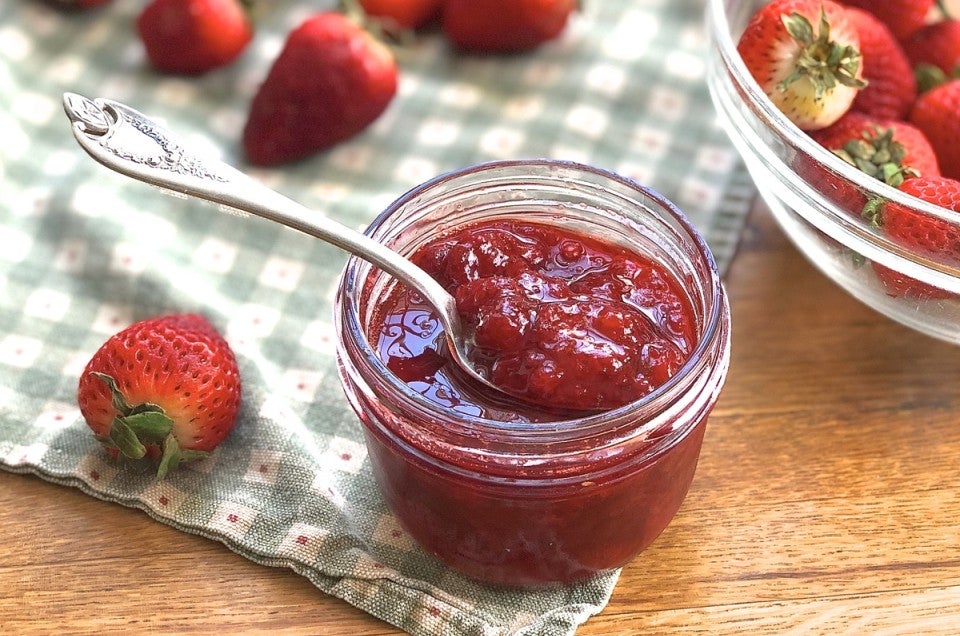


Homemade strawberry jam.
Nice goal; but what does it take to get there?
Canning jars, rings and seals, funnels, paraffin, jar lifters, sterilizing...?
OUCH. The thought of all that gear and all those steps puts a knot in my stomach.
Let's just cut to the chase here: Berries. Sugar. Lemon juice. A microwave.
And 10 minutes later: jam!
Are you ready to A) Make jam for the first time; or B) Let go of your long-held belief that jam and preserves are best cooked in a pot atop the stove, spooned into clean, sterilized jars, simmered in a water bath, and stored on a dark shelf to be dug out sometime in December, when snow is flying and you want a taste of summer?
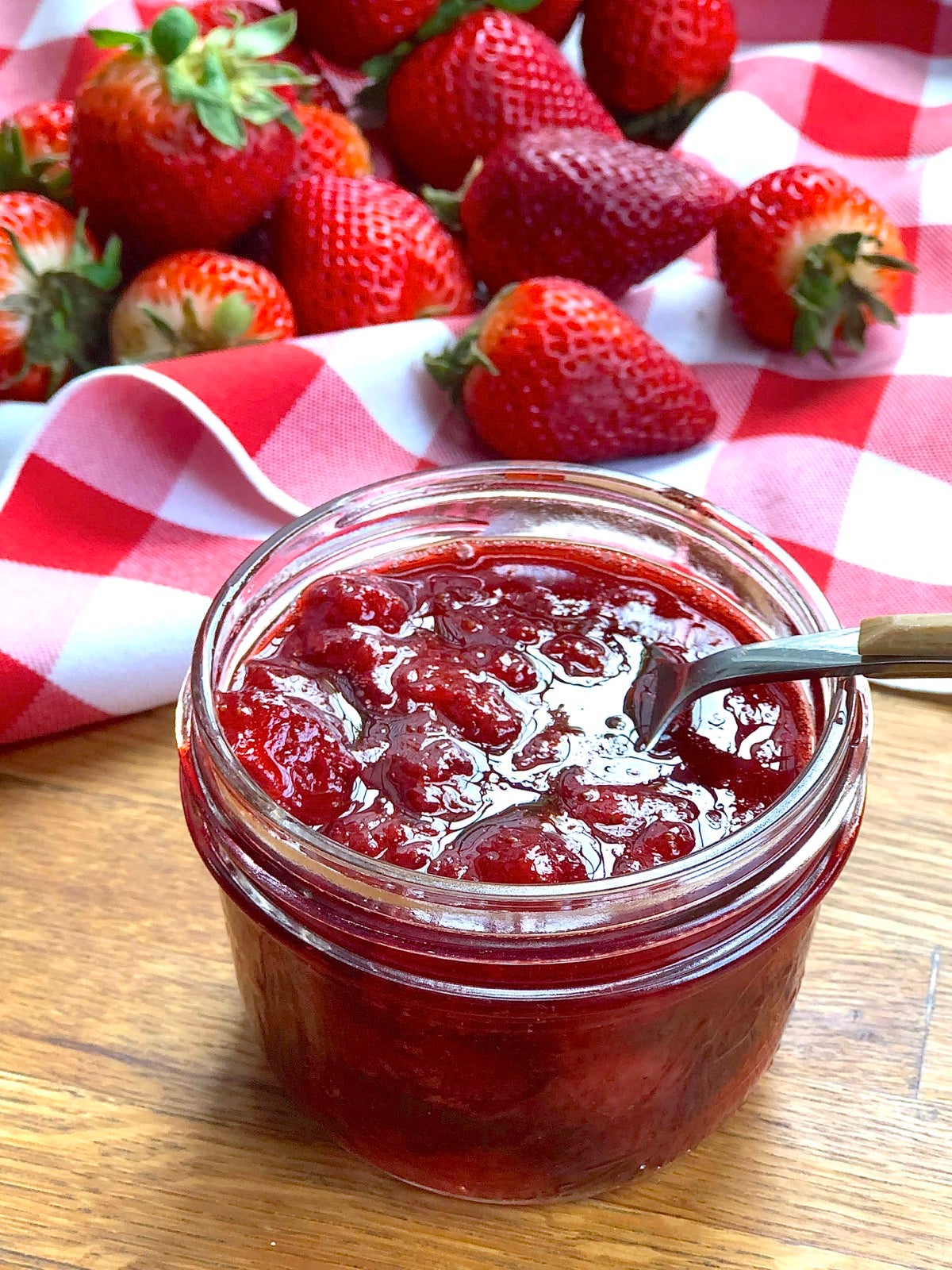
If the answer is either A) or B), keep reading.
Now admittedly, jam is NOT difficult to make the traditional way, for those of you who've got the gear and mastered the fairly simple steps.
But for those of us without a big pot, a jar rack, tongs, a funnel, and the know-how to figure out what "sheeting off a spoon" is supposed to mean, or where the heck in the supermarket they keep the pectin – this simple simple SIMPLE (and did I say fast?) refrigerator jam is utterly satisfying – both the process, and the product.
Let's make microwave berry jam!
First, select a microwave-safe bowl. A LARGE microwave-safe bowl. To be safe, the berry mixture shouldn't fill more than a third of the bowl. You'll see why in a minute.
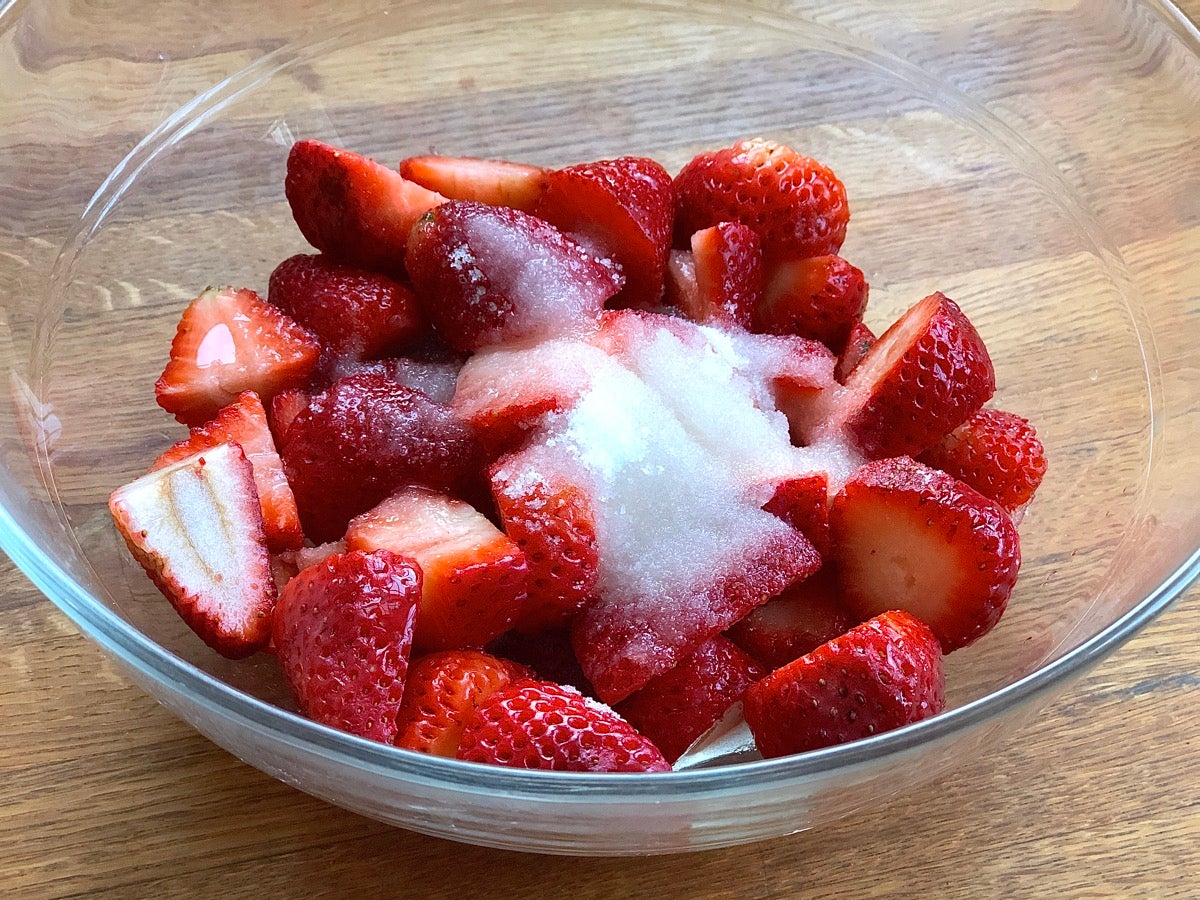
Place the following in your selected bowl:
2 cups (10 ounces) berries, sliced if large
1/3 to 1/2 cup sugar, to taste
1/8 teaspoon salt
2 tablespoons freshly squeezed lemon juice
Stir to combine thoroughly; the berries will release some of their juice.
I'm using strawberries here, and have chopped them fairly fine in a food processor; that's why they look so juicy. Feel free to leave them in larger chunks, if you like. Most berries (raspberries, blueberries, black raspberries) can be used whole.
Set the bowl on a plate, to catch any potential spill-overs. Place the berries in the microwave, and cook for 5 minutes.
High power? Low power? Sorry, my microwave doesn't have high and low settings, so I just set it at 5:00. You may have to experiment once to figure out what works best in your microwave.
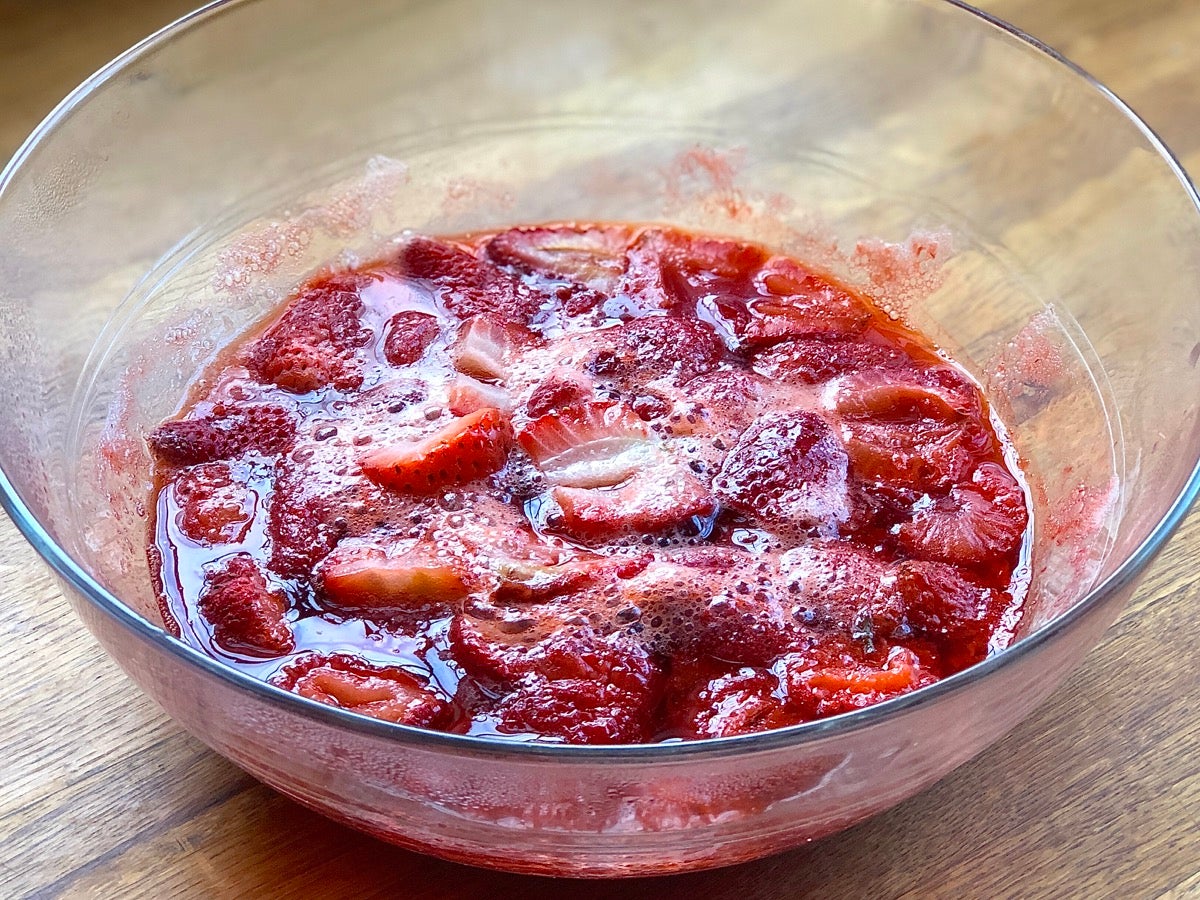
Remove the bowl from the microwave (it'll be steamy; watch out), stir the berries, and cook for another 5 minutes.
Remove the bowl from the microwave, and stir gently but thoroughly.
If the mixture hasn't become sauce-like and slightly syrupy, cook for an additional 5 minutes. The key is the very slightly syrupy texture you'll observe; glistening, and just starting to thicken. If the liquid still looks simply watery/juicy, continue to cook in 2-minute increments.
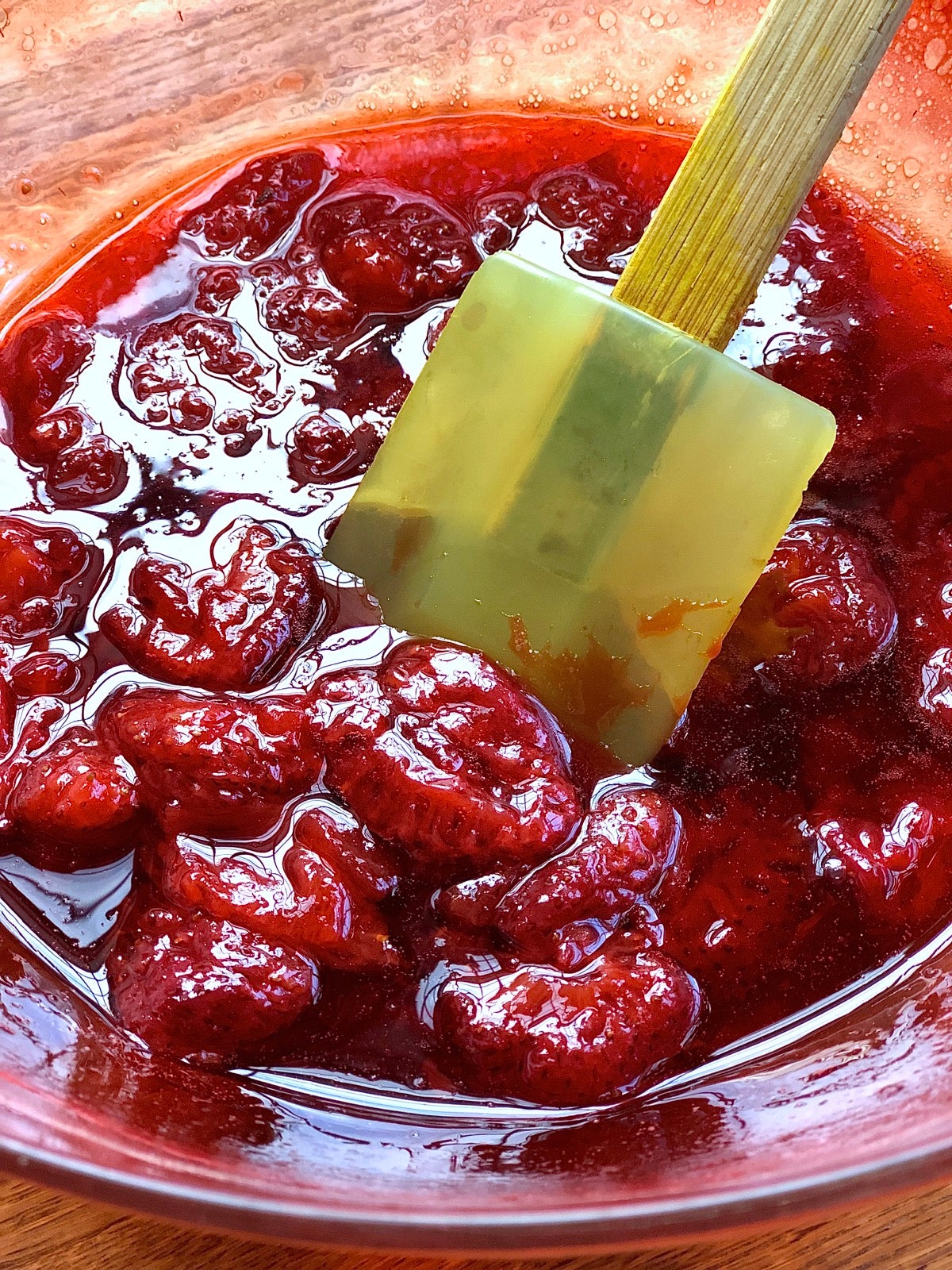
Now, don't panic – you're not cooking these berries until they thicken completely. They'll still be quite pourable (more sauce than jam) after 10 minutes. But trust me, the jam will thicken as it cools.
Stir one more time to combine any liquid, and refrigerate. Chill for several hours (preferably overnight) before serving.
This amount of berries yields 1/2 cup to 3/4 cup jam, depending on how small the berries or how finely you chop them.
Now, for those of you used to simmering up a big pot of preserves, that may not seem like much; in our household, with both of us eating toast and jam every morning, that's about 5 days' worth of jam.
But this particular jam is SO easy to make, it's no problem stirring together another batch (using different berry/fruit combinations) whenever we run out.
Still, can you double the recipe for a larger gathering?
Sure. You'll need to double the cooking time, as well.
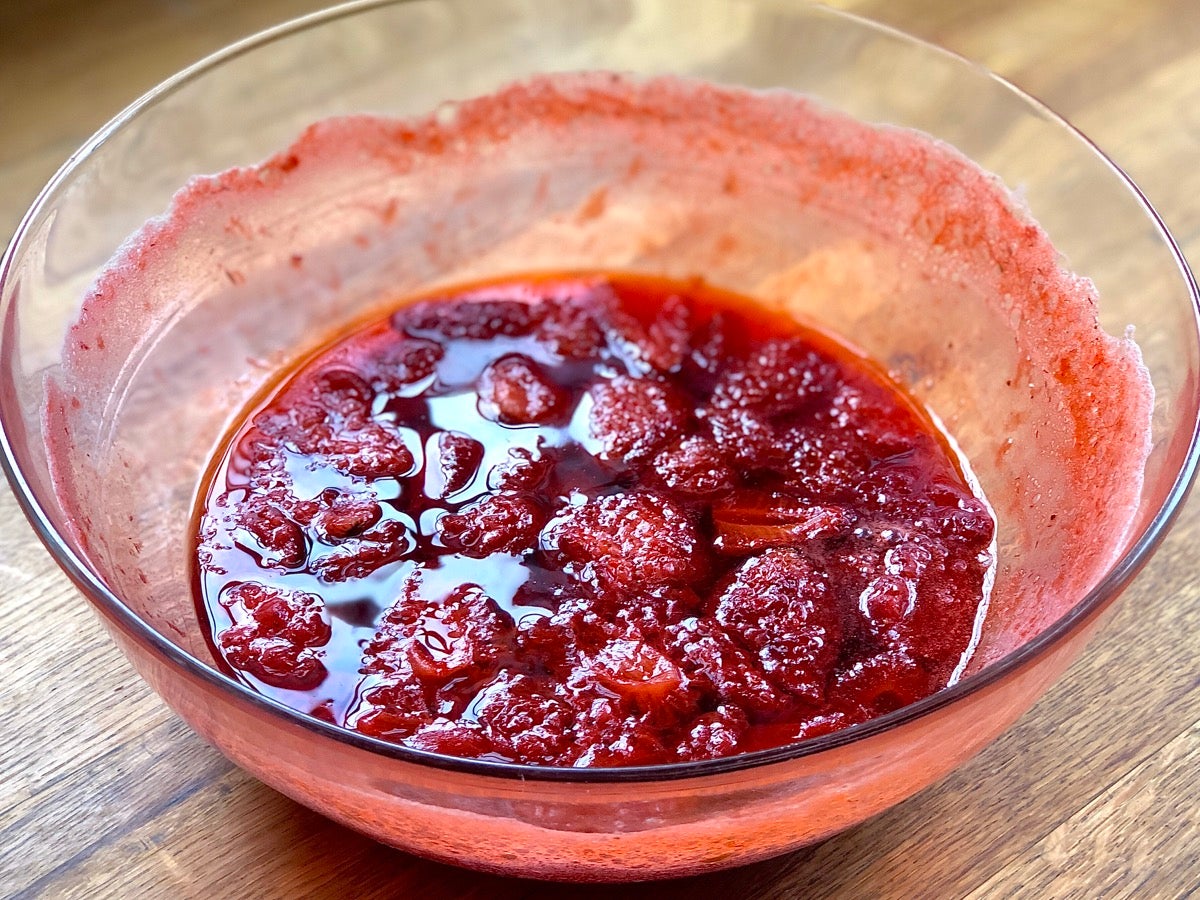
Now, let's get back to why it's important to choose a large enough bowl. That's about 1/2 cup of jam in the bottom, which is what the berries boiled down to. But look how far up the bowl the liquid reached, as the mixture bubbled in the microwave.
Better to be safe than sorry – no matter what bowl you use, set it on a plate to catch any potential overflow.
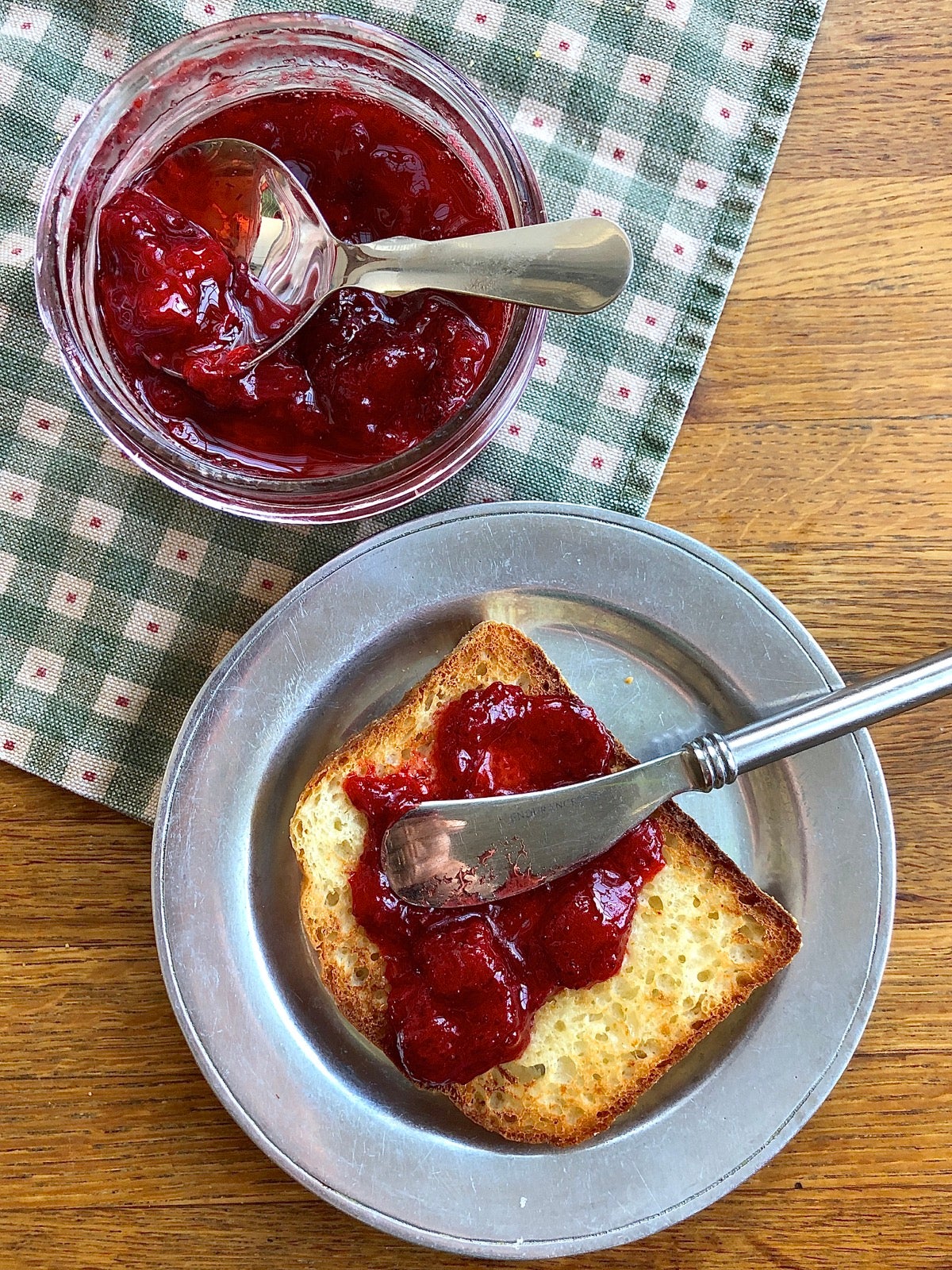
Toast, anyone?
Berry/fruit combinations are delicious, as well. I tried equal parts mango and strawberry, and it worked fine. Experiment; you'll soon discover your own favorite fruits, or fruit/berry combinations.
Whatever fruit(s) you choose, weigh out 10 ounces (about 2 cups) of washed, trimmed fruit and/or berries, and go from there.
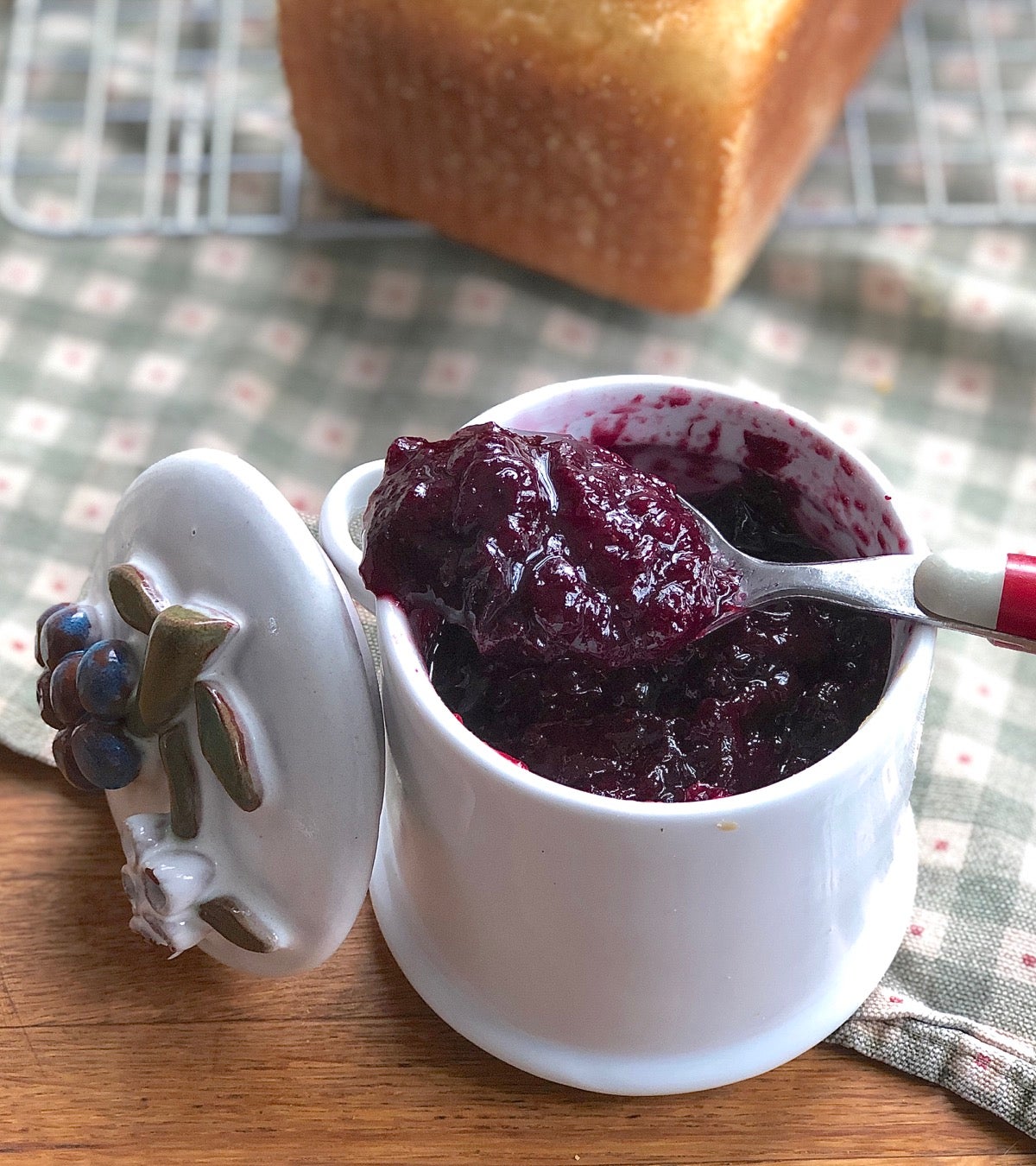
Yes, the blueberry jam was a big hit around the breakfast table.
Speaking of blueberries, fresh ones aren't always available, and they can be quite pricy. So, can you use frozen berries?
Sure. You'll probably need to cook them for 15 minutes rather than 10, due to their excess liquid.
Tip: To make a berry or fruit sauce, simply serve the jam hot out of the microwave, rather than waiting for it to chill/thicken. Blueberry sauce is wonderful atop pancakes or waffles.
Finally, can you seal the hot jam in jars and store it at room temperature, as you would jam made the usual way?
Don't know, and I don't dare hazard a guess – the pectin, the specific sugar level, the sterilizing – not going there! But veteran jam makers, feel free to add your 2¢ by commenting below; your feedback will inform us all.
Into this shortcut? If you like berry jam made in the microwave, you'll really love Easy Microwave Lemon Curd!

